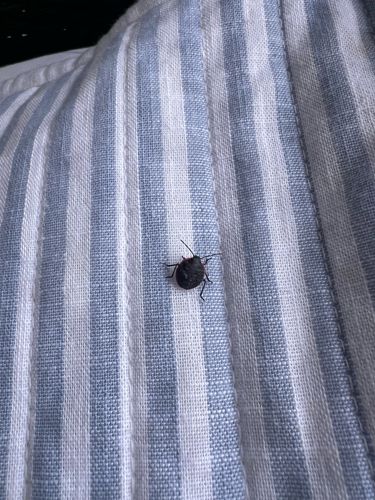Stink Bug (likely a nymph or a dark-colored species)
Scientific Name: Variable (e.g., Halyomorpha halys for Brown Marmorated Stink Bug, but exact species cannot be determined from the image alone)
Order & Family: Order: Hemiptera, Family: Pentatomidae
Size: Typically 12-17 mm (0.5-0.7 inches) in length, though size varies by species and life stage.

Natural Habitat
Stink bugs are commonly found in gardens, agricultural fields, orchards, and wooded areas. In cooler months, they often seek shelter in homes and other buildings.
Diet & Feeding
Most stink bugs are plant feeders, using their piercing-sucking mouthparts to feed on fruits, vegetables, and ornamental plants. Some species are predatory and feed on other insects.
Behavior Patterns
Stink bugs are known for releasing a foul-smelling odor when disturbed or crushed, which is a defense mechanism. They are generally slow-moving. Many species, like the Brown Marmorated Stink Bug, are known to aggregate on the sides of homes and other structures in the fall seeking overwintering sites.
Risks & Benefits
Risks: Many species of stink bugs are considered agricultural pests, causing significant damage to various crops, including fruits (e.g., apples, peaches), vegetables (e.g., corn, tomatoes, soybeans), and ornamental plants. Their presence in homes can be a nuisance, and while not harmful to humans, their odor can be unpleasant. Benefits: Some predatory species within the Pentatomidae family can be beneficial by preying on other insect pests.
Identified on: 8/10/2025